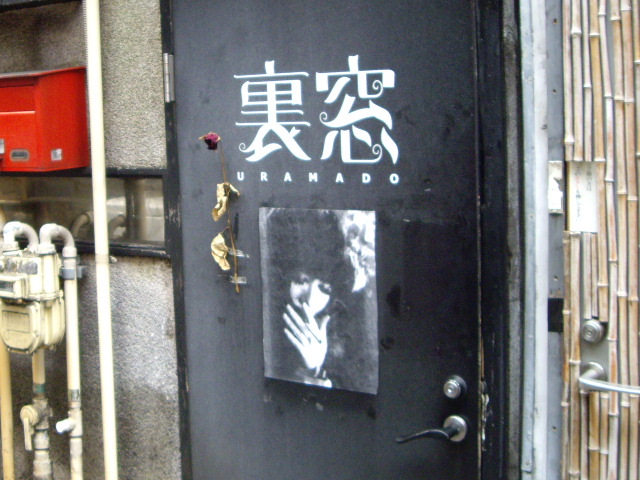What can you see from a rear window?
In the Alfred Hitchcock film of the same name, you witness – or think you witness – a murder. In the Shuji Terayama song below, sung by Maki Asakawa, you see washing lines, dirty barges on a river and yourself three years ago, before everything went bad.
In the two other songs also entitled “Rear Window,” you see grief and loneliness, booze, tears and rivulets of rain.
Rear windows opens onto a separate, darker reality.
Lyrics by Shuji Terayama; music by Maki Asakawa. From the album Live Yoru, released in 1978.
Maki Asakawa was an iconic figure in Japan’s 1970s underground scene, with her trademark ankle-length black skirt, curtains of hair and billowing cigarette smoke. After making her breakthrough with a collection of Terayama songs in 1969, she remained unswayed by changes in musical and other fashions and stuck to the same mixture of blues, jazz and chanson throughout her career.
Famously suspicious of CD technology, Maki would have been surprised to learn her music has recently been released on vinyl (and CD) overseas, under the category of “world music” and is available on Amazon.
She continued to give concerts at the famous Pit Inn jazz club and similar venues up until her death in 2011 at the age of 69.
Lyrics by Takashi Taka; music by Tetsuya Gen. Performed by Hibari Misora.
Hibari (“Skylark”) Misora was one of the most famous Japanese singers of the twentieth century, similar in impact, talent and personal problems to Edith Piaf. After making her debut as a public performer at the age of eight in the last months of the Second World War, she recorded over 1,500 songs, sold over 80 million records and appeared in more than 150 films.
Hibari was Japan’s sweetheart through the 1950s and 1960s, but in the early 1970s her mob connections led to her being blackballed by the national broadcaster, shut out of municipal concert halls and slammed by the mass media. Still she refused to repudiate the yakuza boss who had acted as a father-figure since her earliest days in show business.
As musical tastes changed, the hits dried up and she suffered from illness, alcoholism and depression. Even so she remained a popular live performer.
The above performance of “Ura Mado” took place at the opening concert for the Tokyo Dome in April 1988. Seriously ill with hepatitis and barely able to stand, Hibari sang 39 songs before before returning to hospital by ambulance. She died 14 months later at the age of 52.
Lyrics by Yoko Yamaguchi; music by Joe Bishop. Performed by Naomi Chiaki.
Considered by some to be a better singer than Hibari, Naomi Chiaki was at the height of her popularity in the 1970s. She covered kayokyoku pop songs, fado, singer-songwriter material and the enka sentimental ballads for which she is best known. In the 1980s she turned to acting in TV shows and films, before retiring entirely from show-biz after her husband died in 1992.
Like Mari Asakawa, Naomi Chiaki has been honoured by having a bar in Shinjuku named after one of her signature songs, Yakan Hiko (“Night Flight”). She is also notable for having performed a fourth song called Ura Mado (“Rear Window”), an enka which is exceptionally lachrymose even by the standards of the genre.
The Ura Mado above was performed live at the Nakano Sun Plaza in 1974. If it sounds unusually jazzy for an enka singer, that’s because it is. The tune is Joe Bishop‘s Blue Prelude, first recorded by the Casa Loma Orchestra in 1933. Bishop went on to become a member of Woody Herman’s Herd, for whom he wrote Woodchopper’s Ball.
Blue Prelude was subsequently covered by such diverse artists as Bing Crosby, Nina Simone and Jorma Kaukenon of Jefferson Airplane fame. The Japanese lyrics, though, were written by novelist-songwriter Yoko Yamaguchi and have little to do with the Gordon Jenkins original.
You have to keep the rear window open – Shuji Terayama



